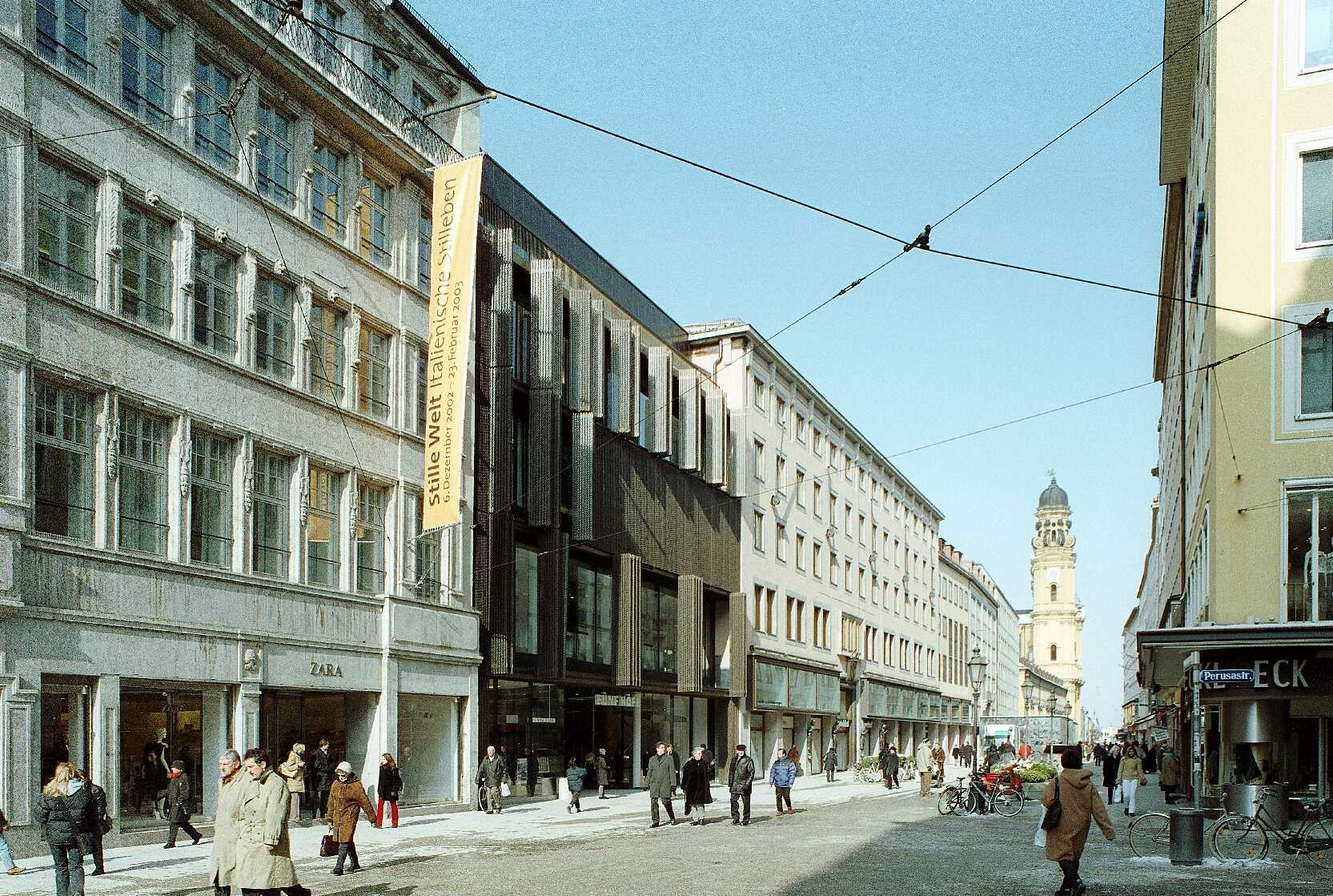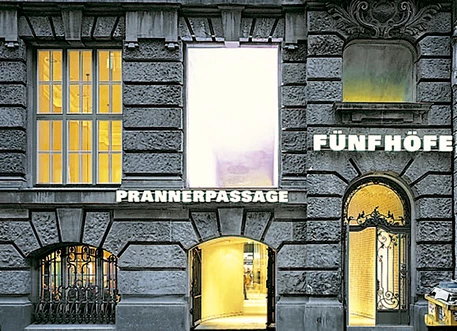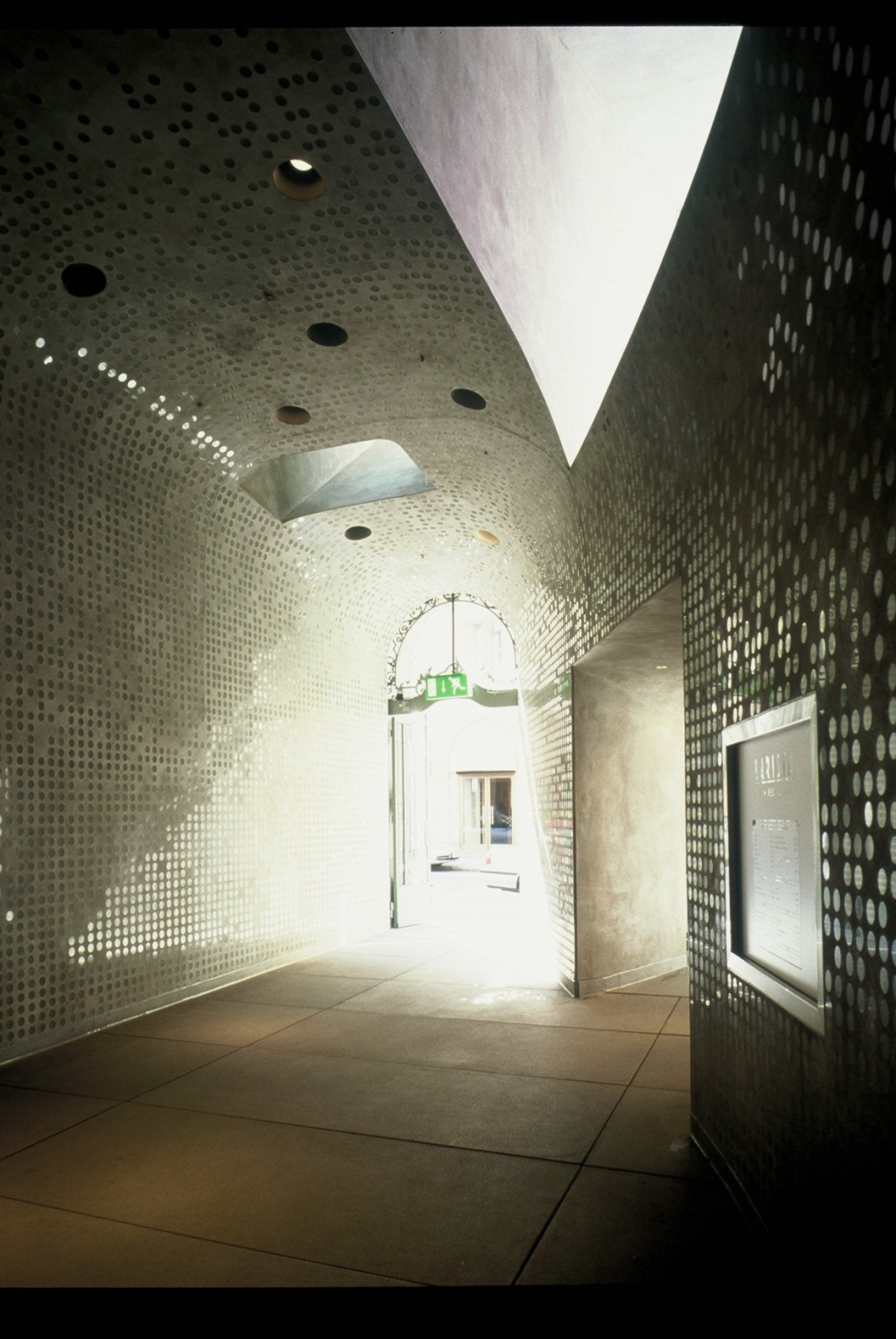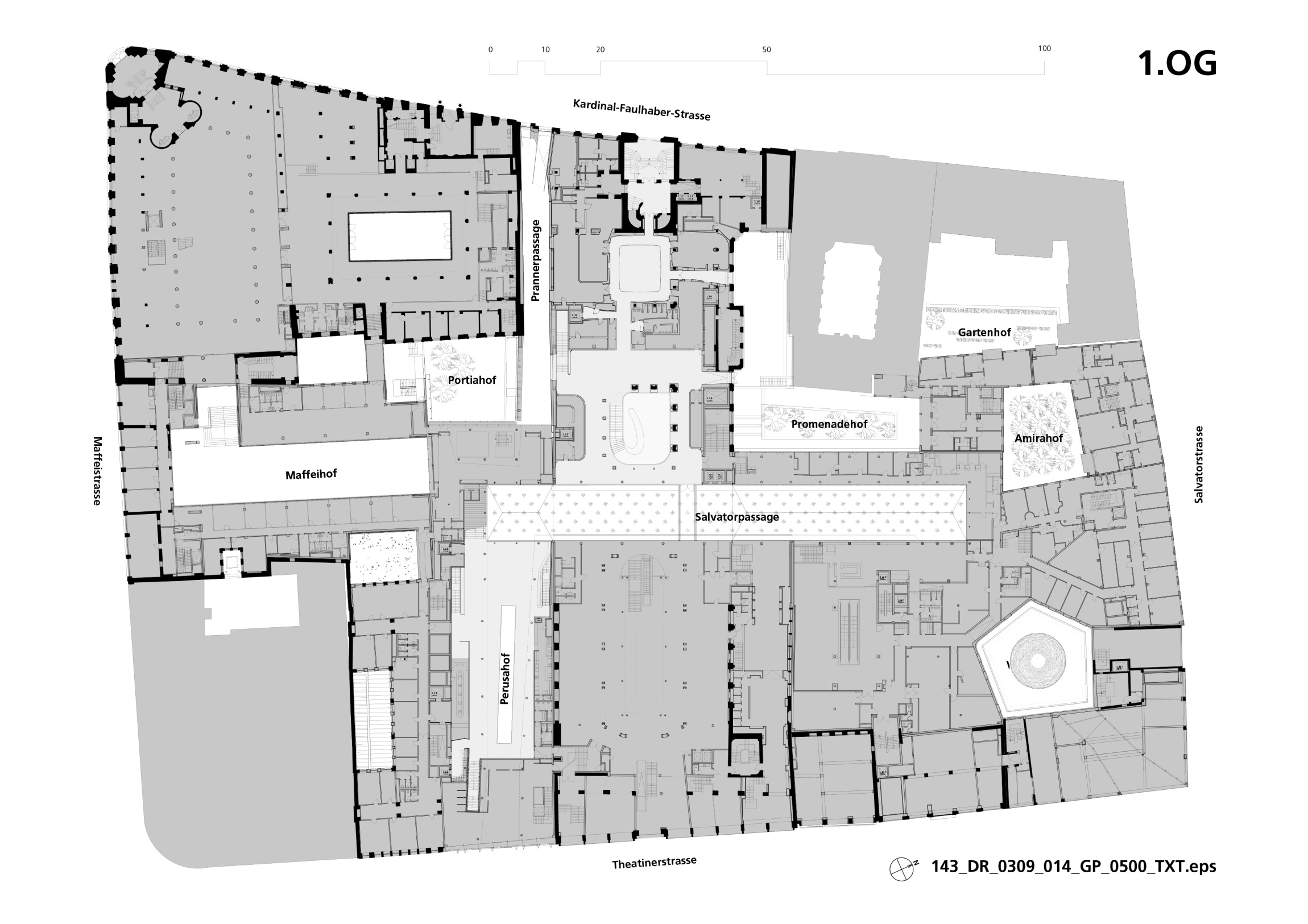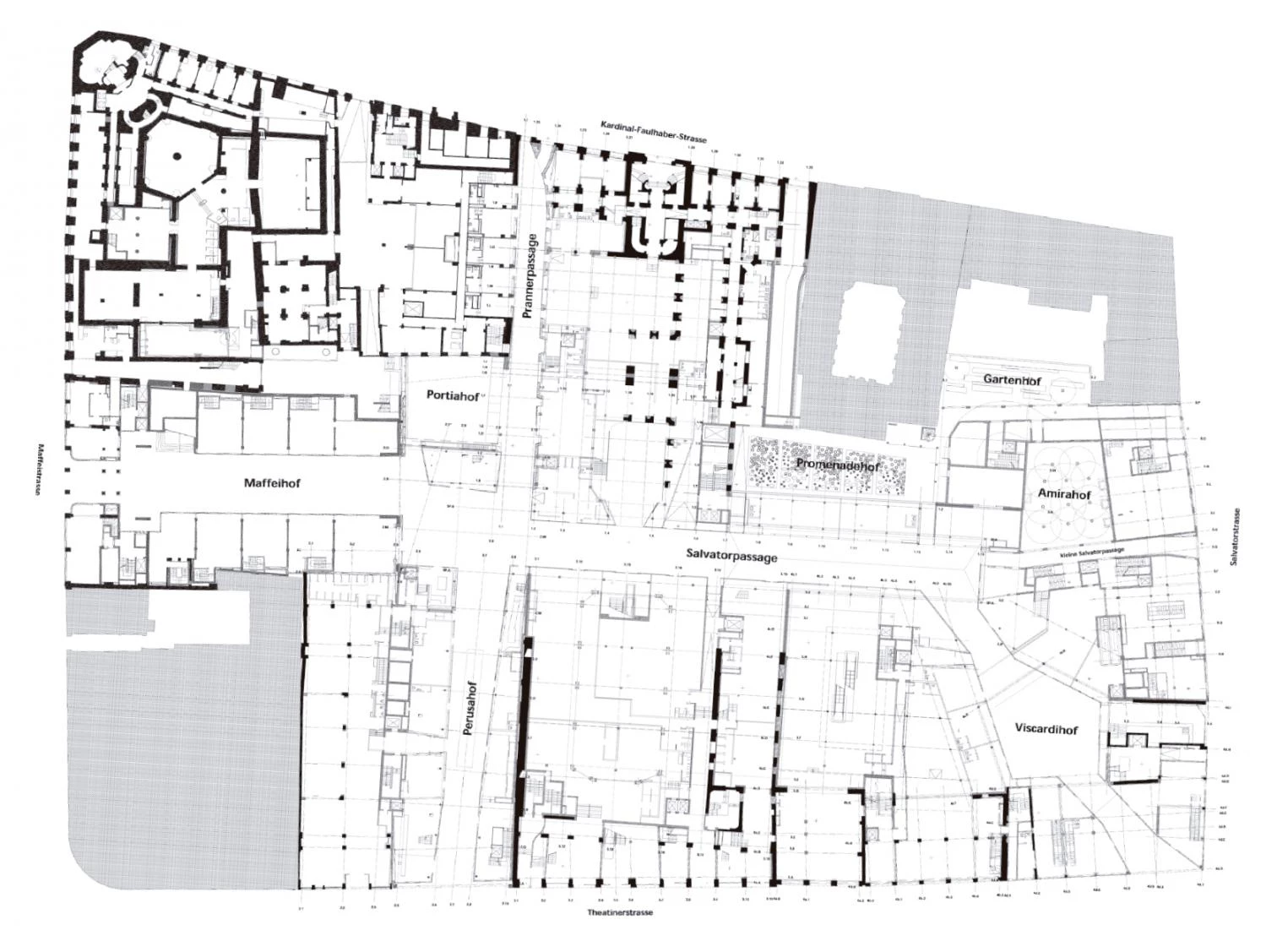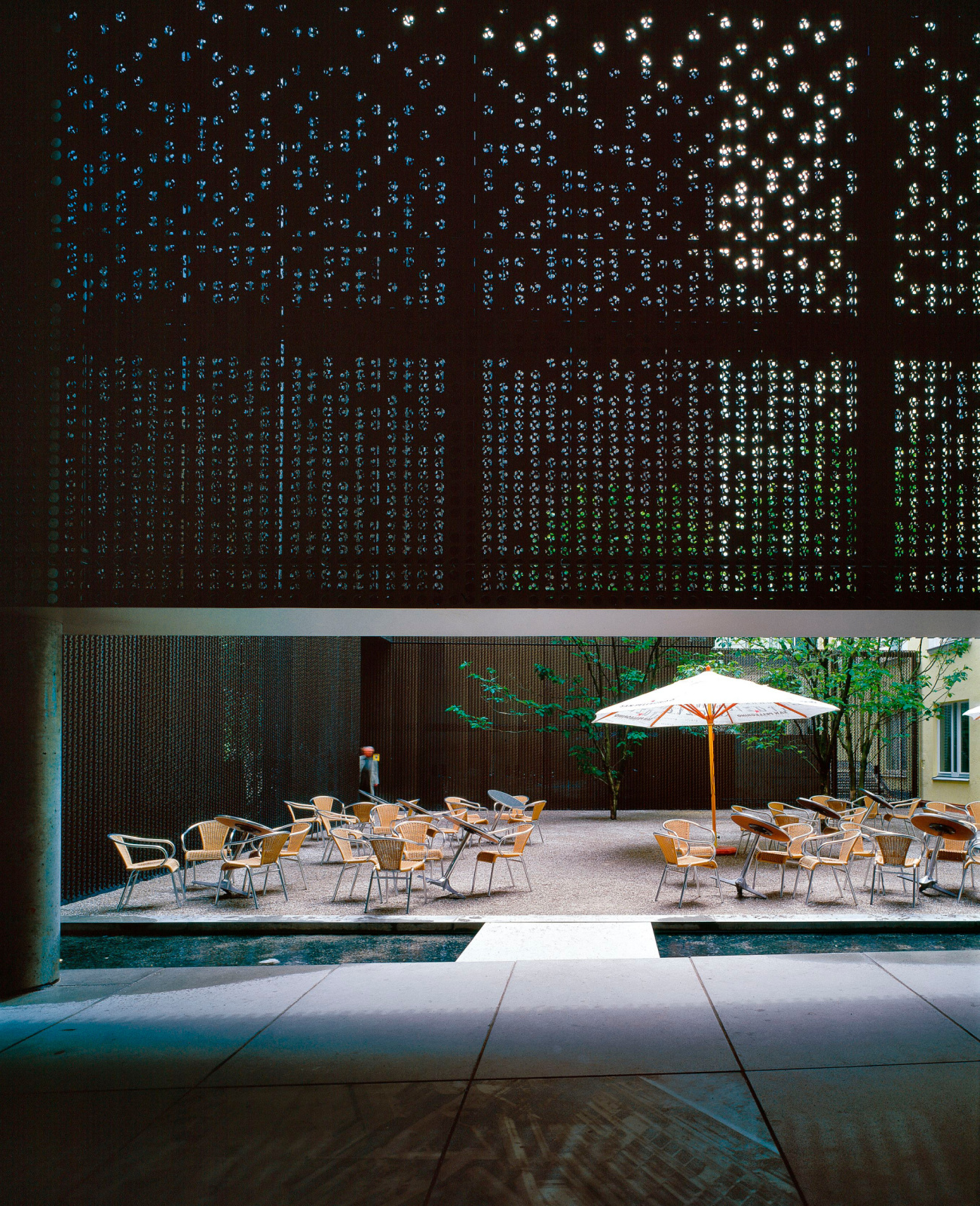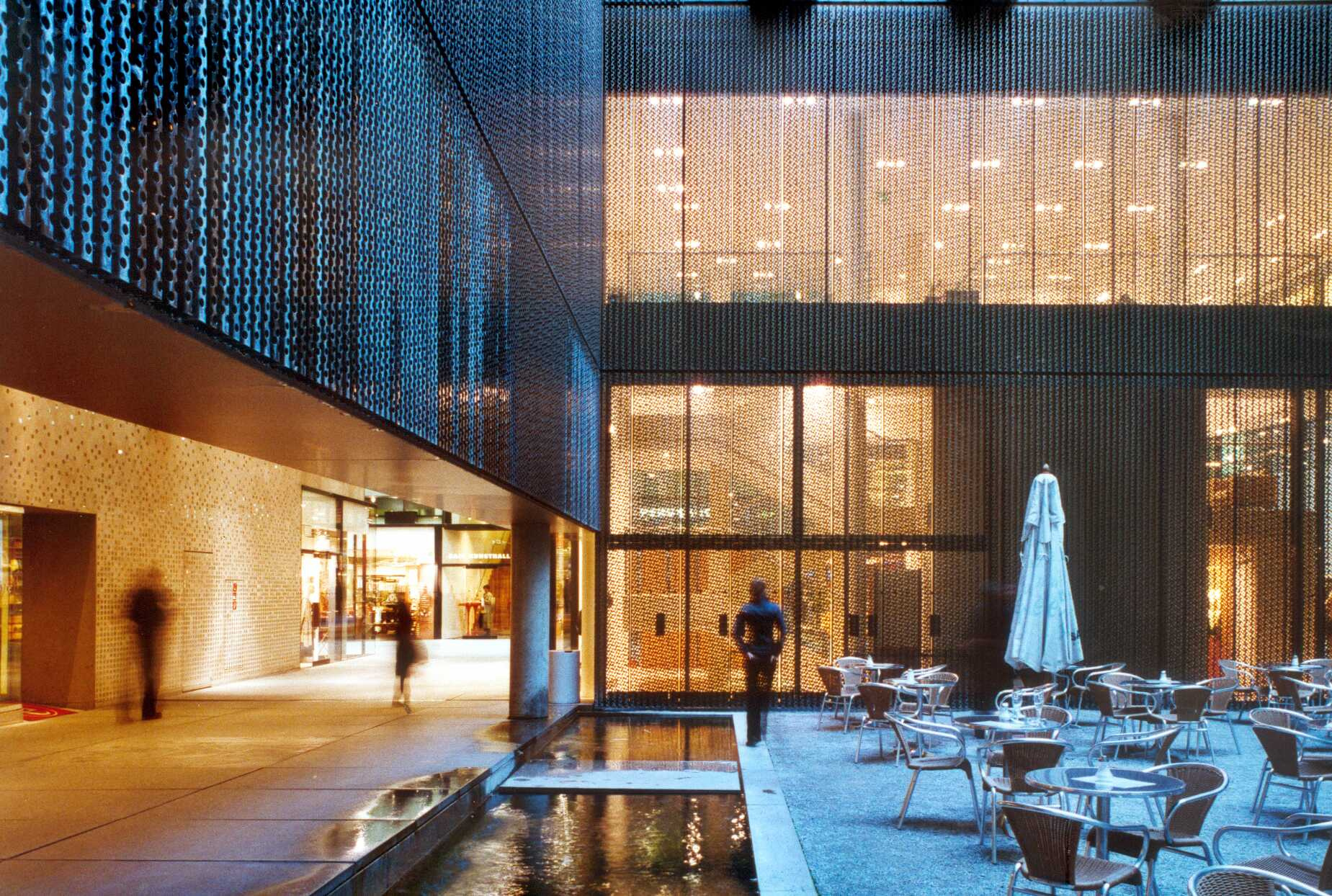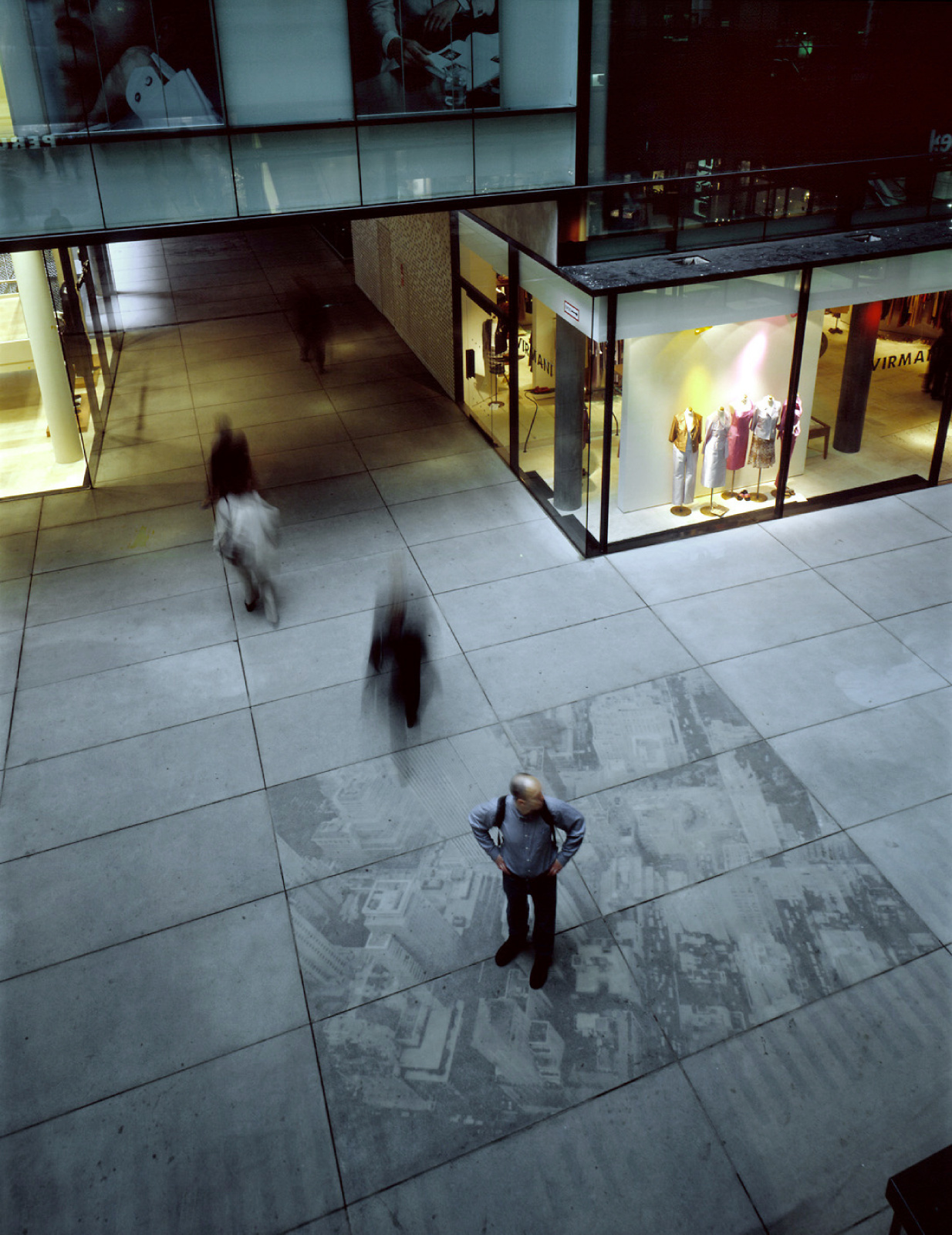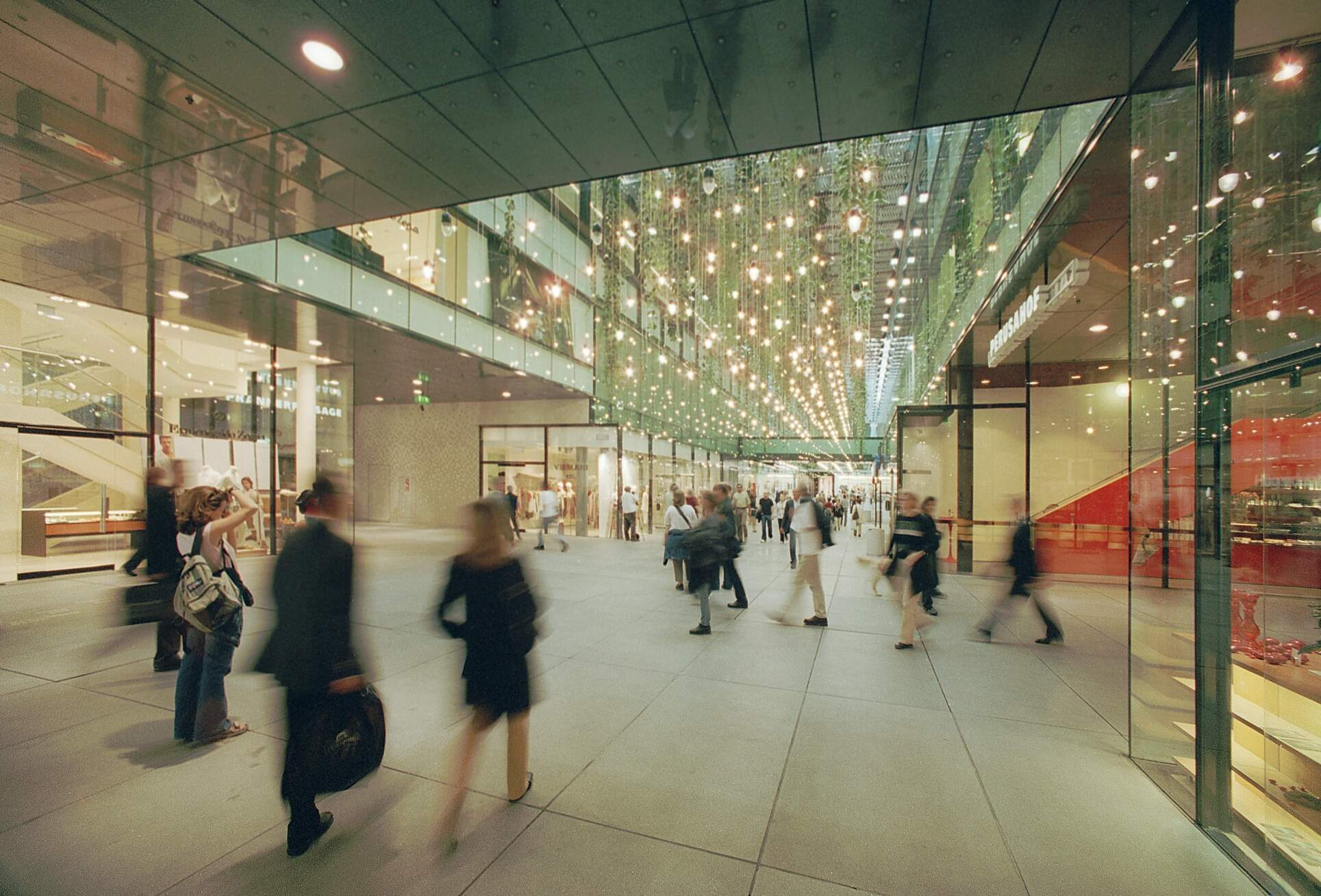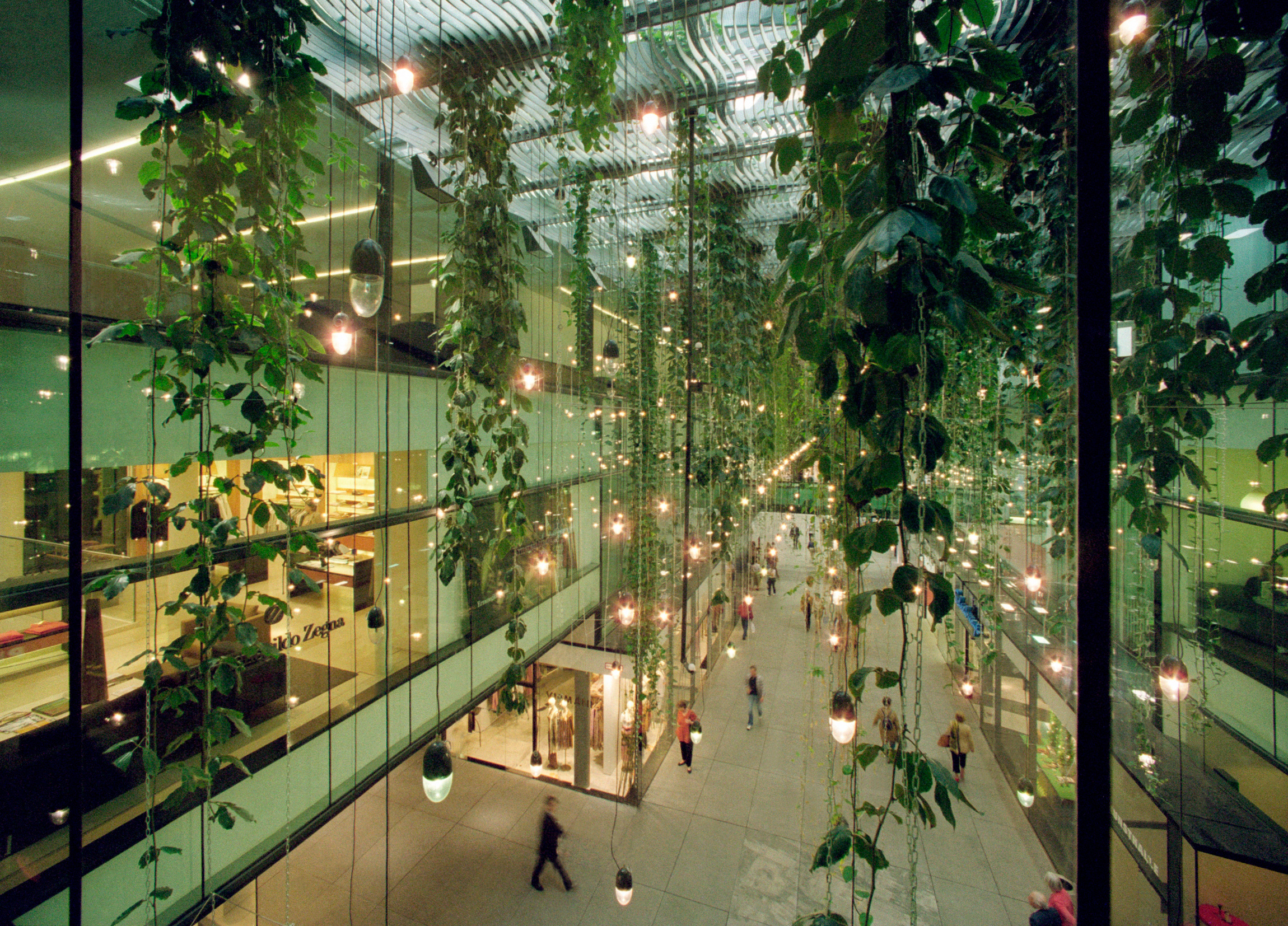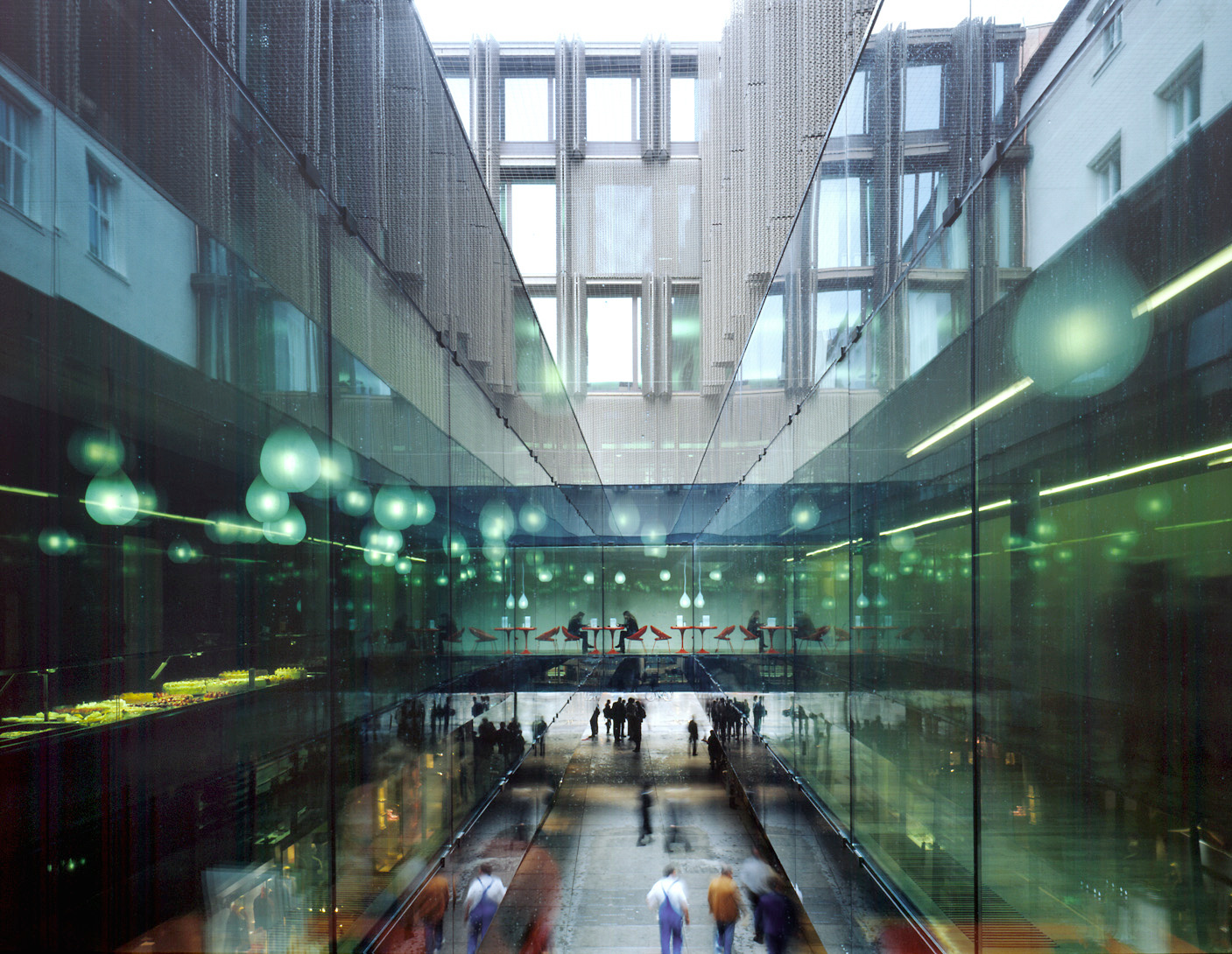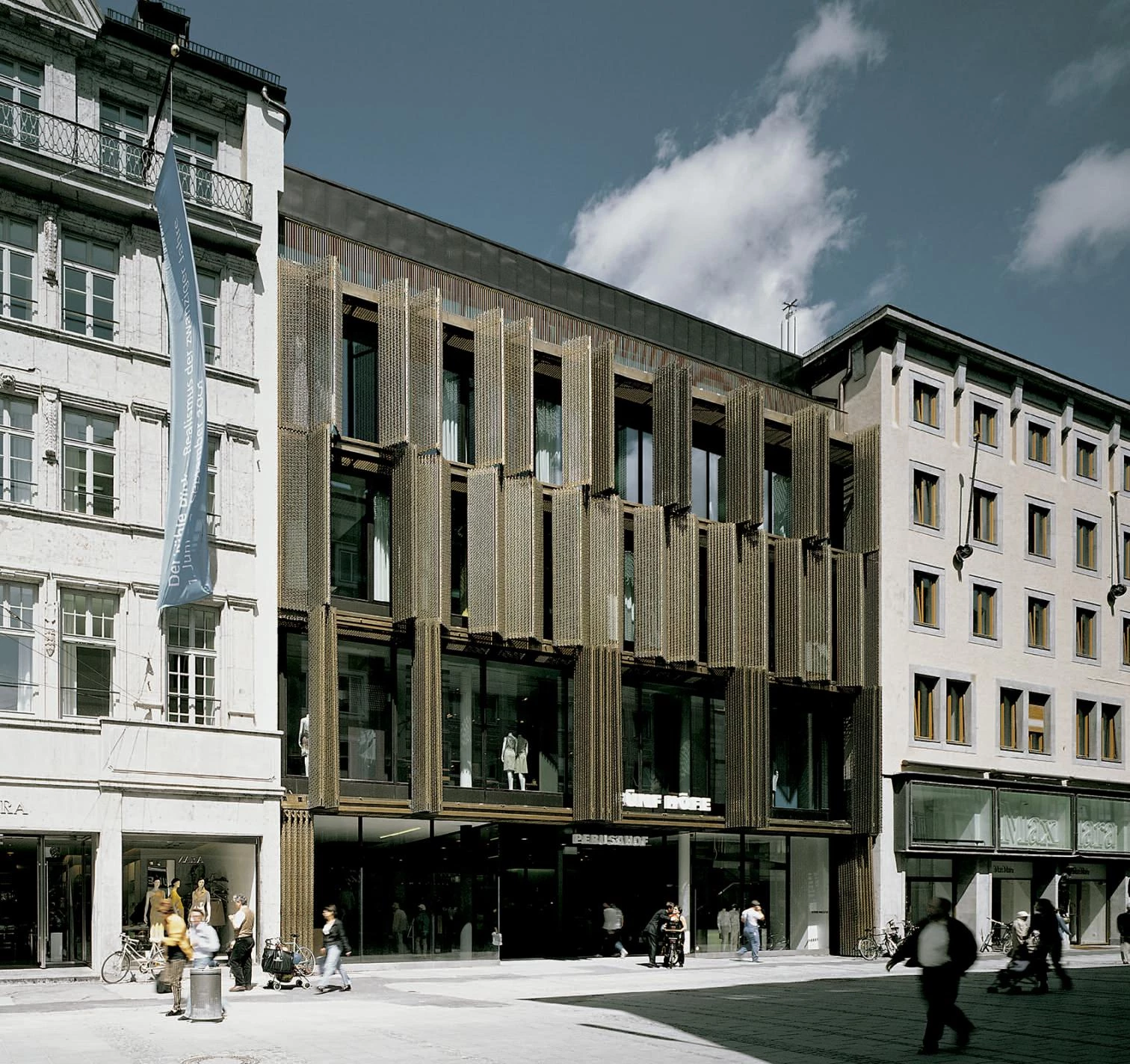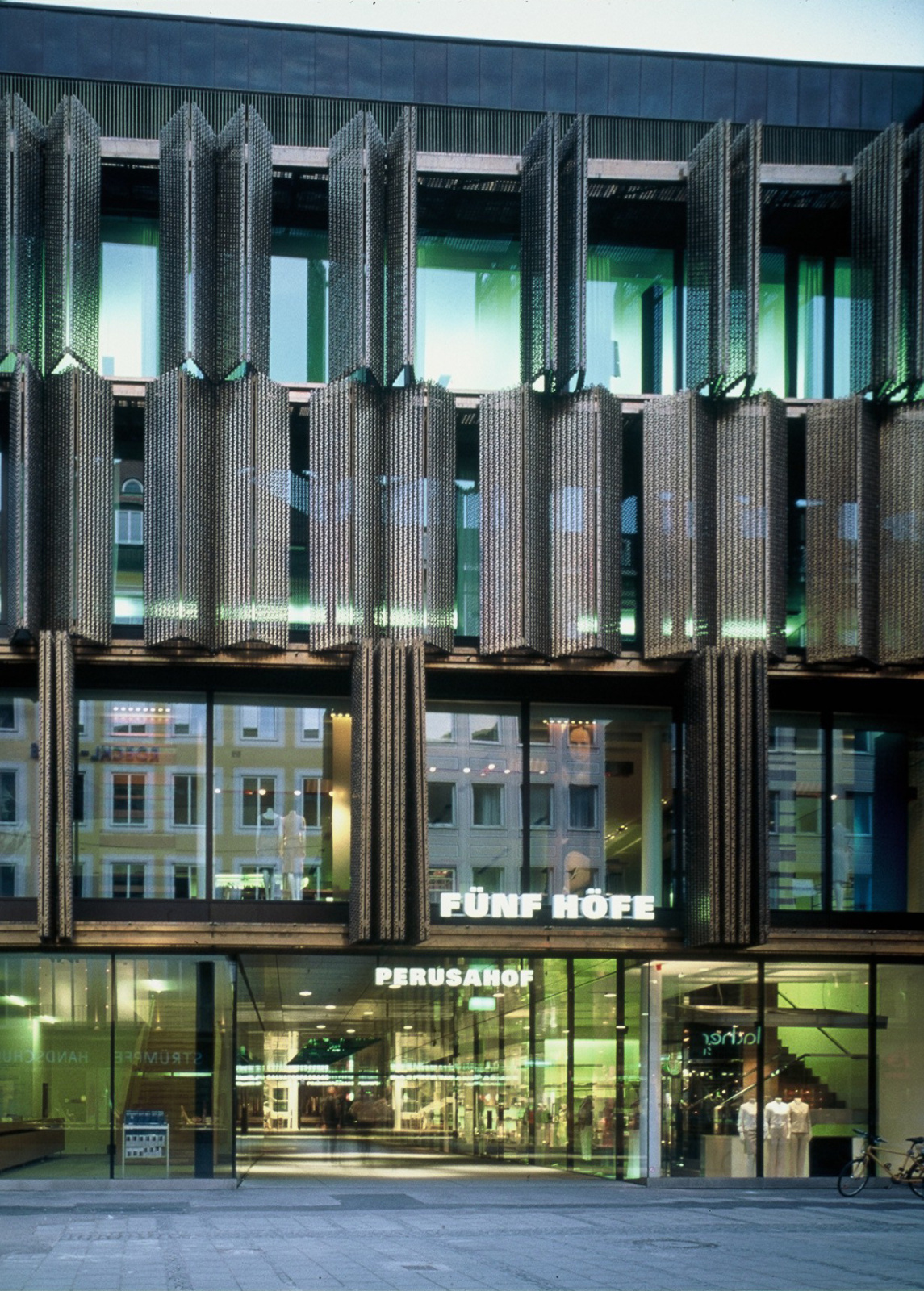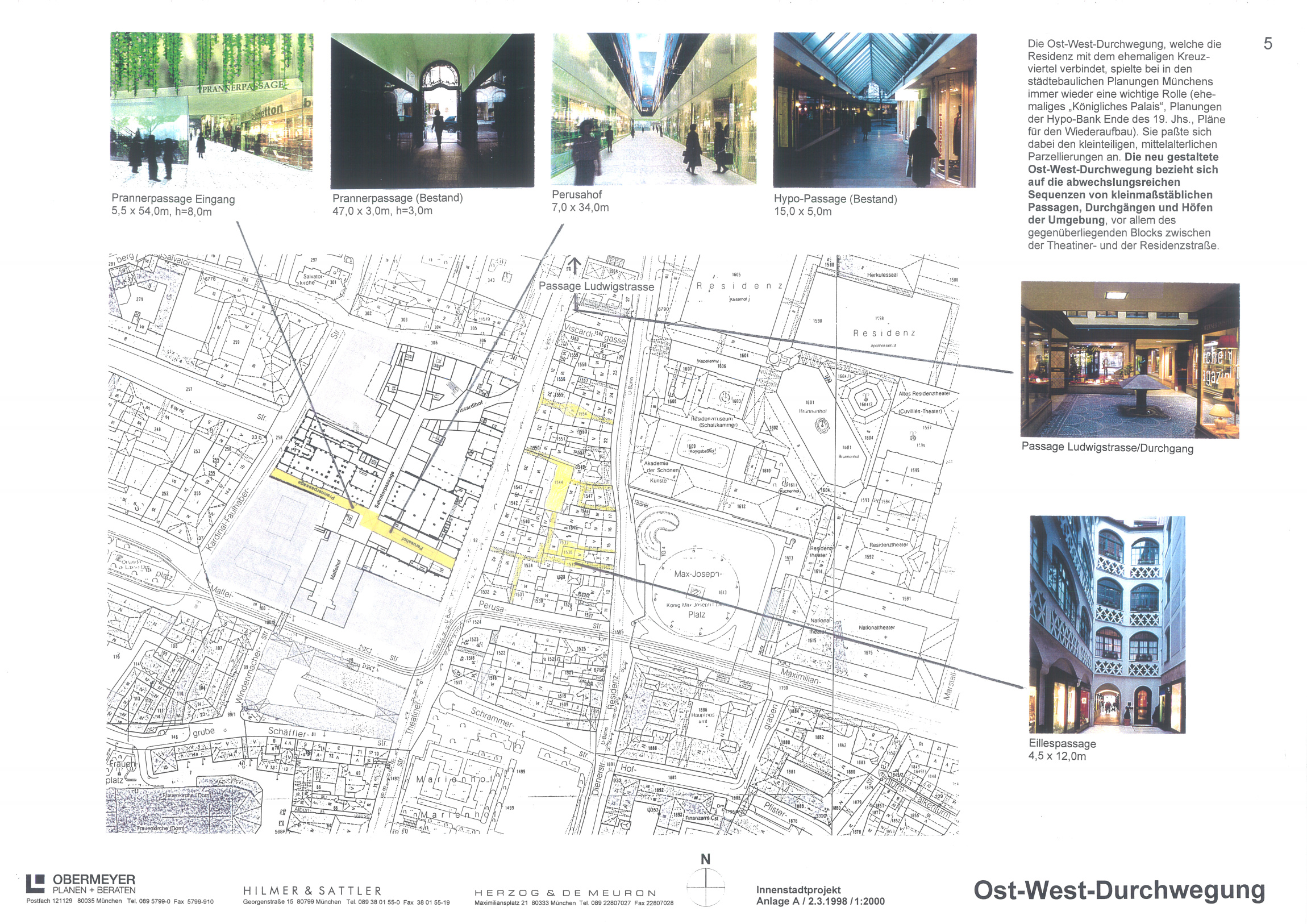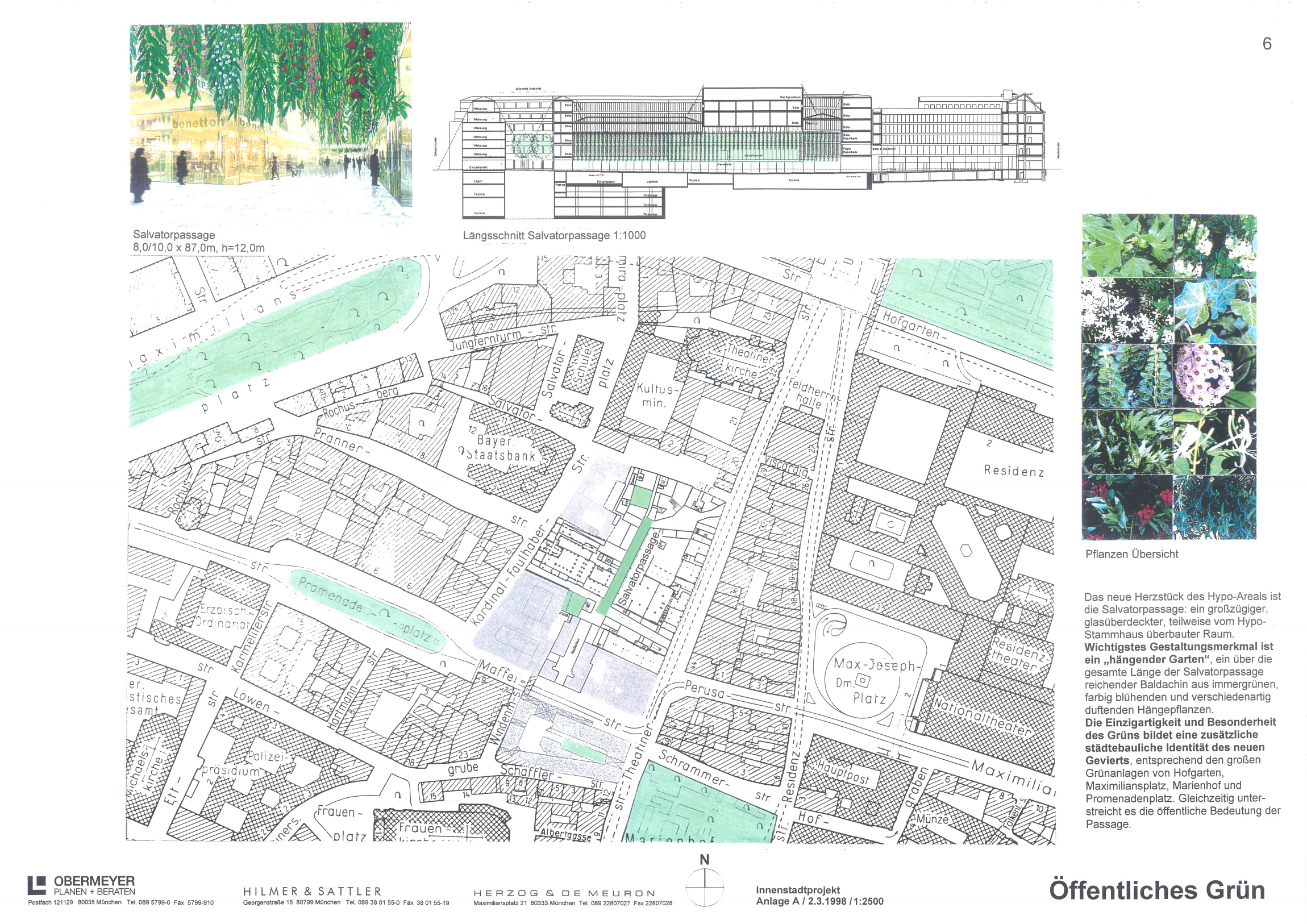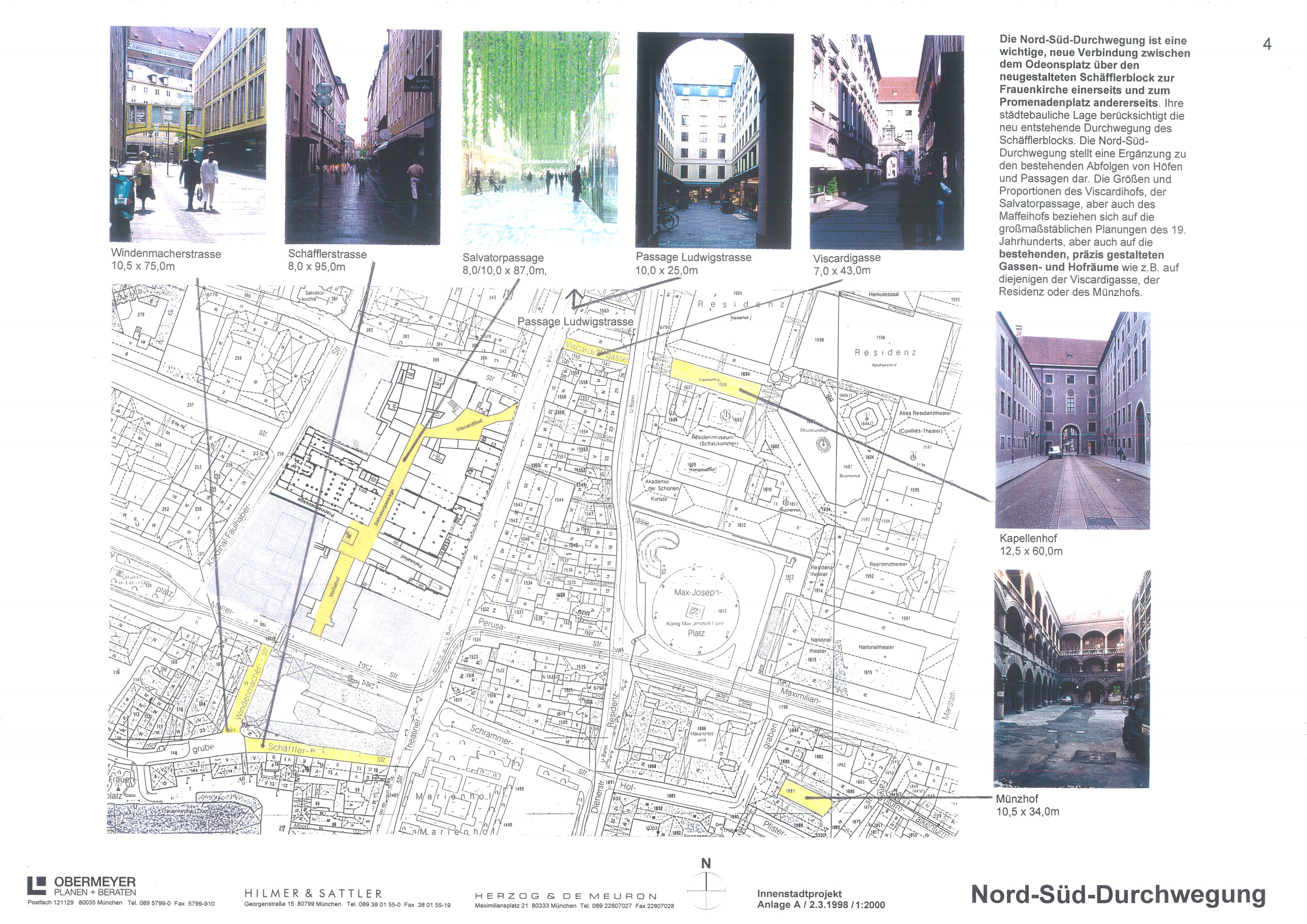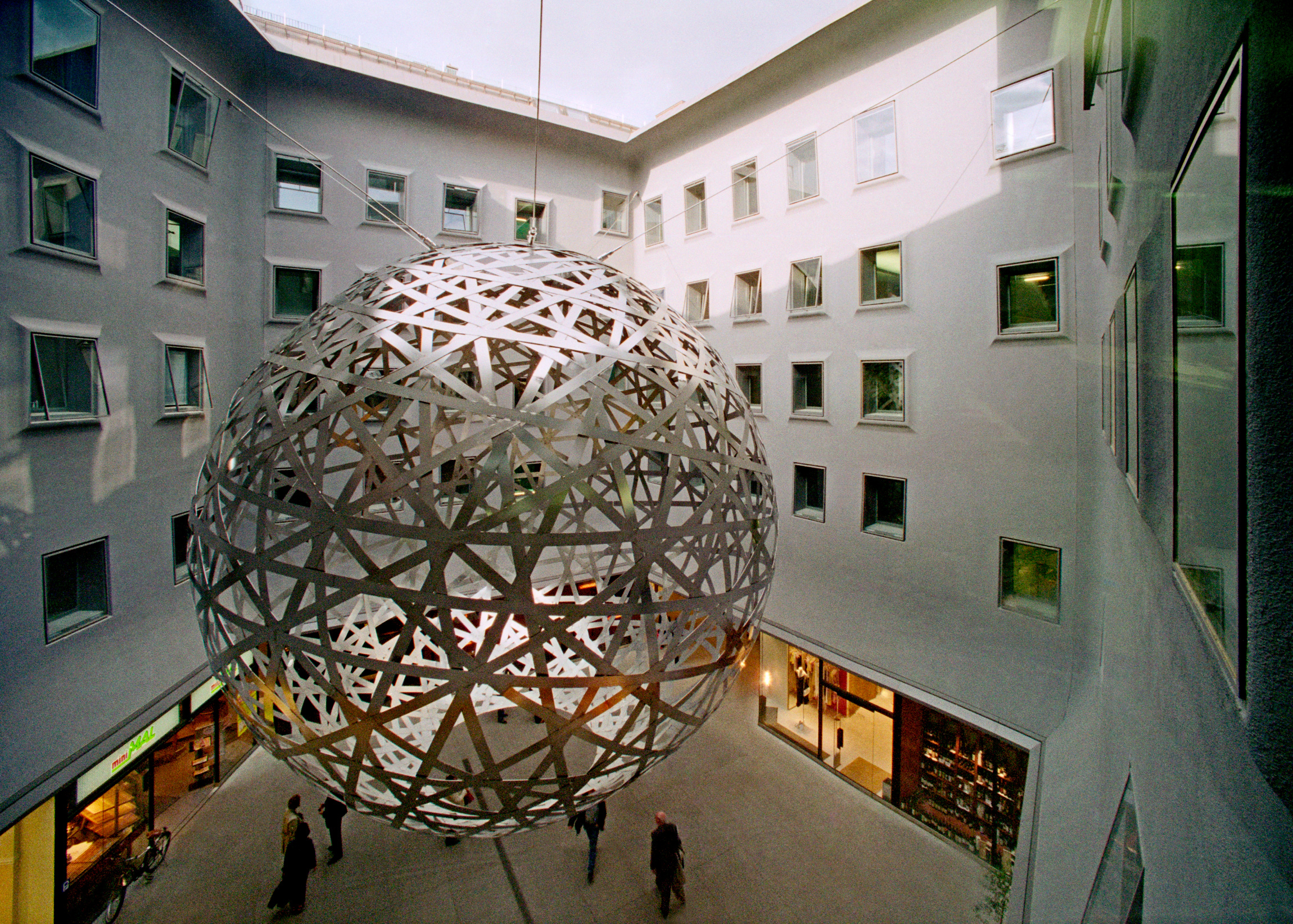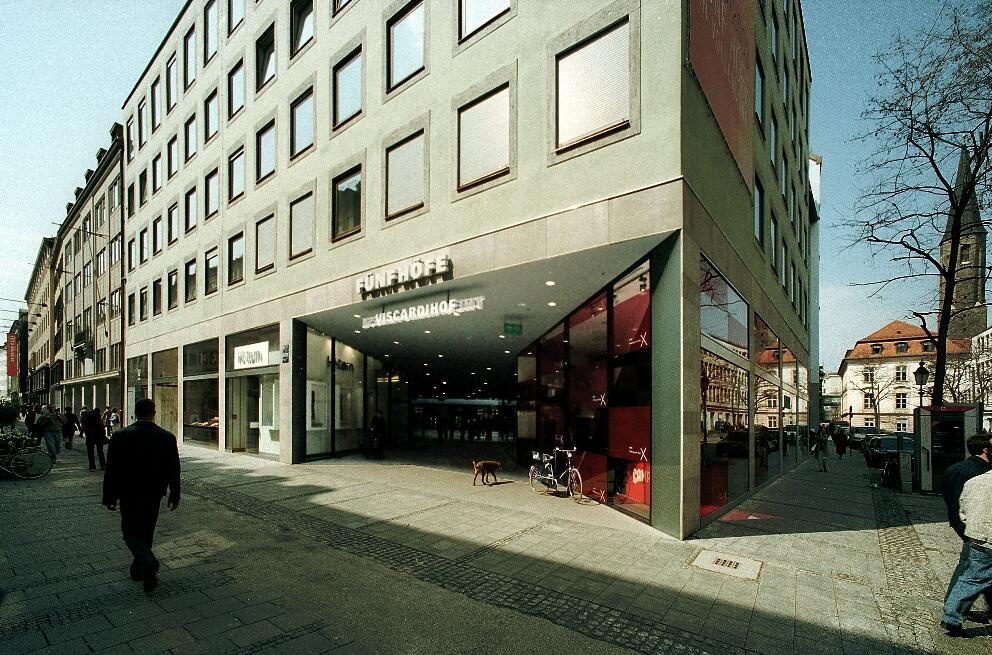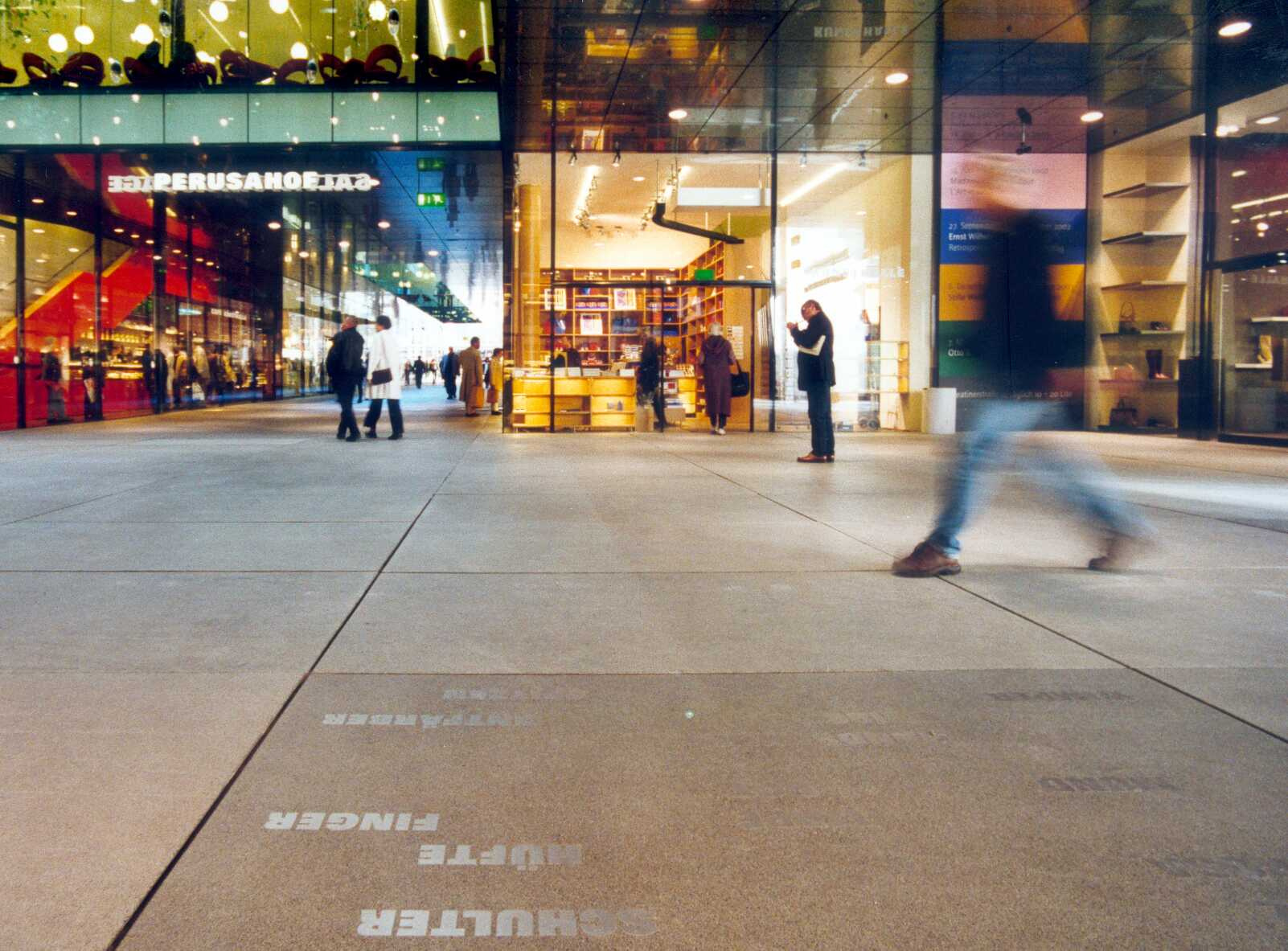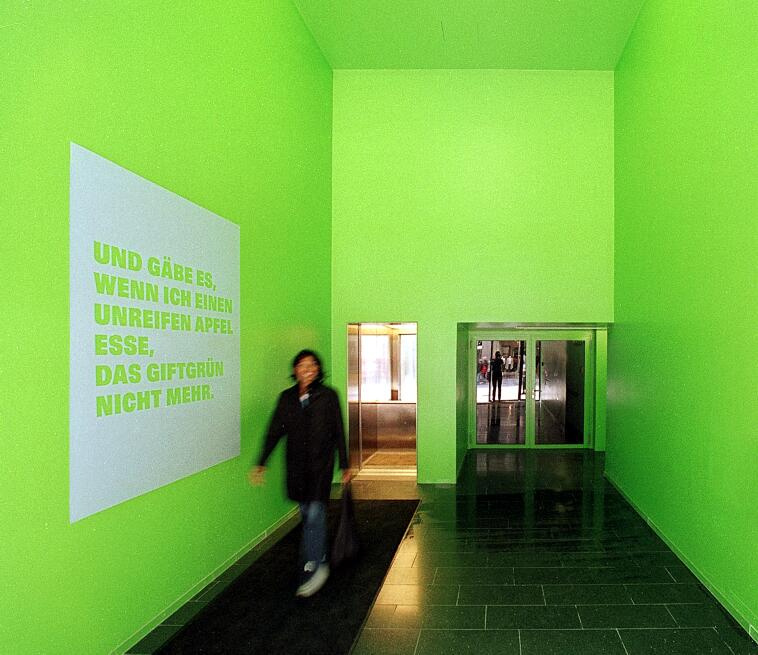The project submitted in 1994 was based on the demolition of most of the buildings, as specified by the competition at that time, while in the newly initiated project of 1997 and 1998, most of the buildings and façades along the street have been preserved. What initially appeared to be a disadvantage, proved a stroke of good luck. Instead of having to contend with the façades of the historical neighborhood, intervention in an existing structure made it possible to create unexpectedly exotic spaces. The buildings acquire volume and shape by being placed like fillers around the spaces cut out of the interior of the block.
The result is an entirely new complex, a sequence of courts varying in size and shape with shops, restaurants and cafés. On one hand, the concept for the “Five Courts” may be seen as a contemporary complement to the historical courts of residences, and on the other, as a European response to American shopping malls.
Courts and Arcades
The project is a puzzle assembled out of a number of different building blocks or pieces. But these blocks are not buildings; they are courts and arcades or passages which establish a new order. The shapes of the buildings act like fillers in the spaces cut out of the interior of the block. Circulation through the Five Courts is defined from east to west by the Perusahof and the Prannerpassage, from north to south by the Viscardihof, the Salvatorpassage and the Maffeihof. Upon completion of the first phase of building in February 2001, three of the five courts were inaugurated: the Maffeihof, the Perusahof and the Prannerpassage. In June, the Kunsthalle reopened with twice as much gallery space as before.
When you walk into the block from Theatinerstrasse, you first enter the Perusahof, a reflecting glass vessel made of large-format windows, a glass ceiling and above it a narrow glass court that visually connects visitors to the Kunsthalle with people walking through the arcade.
From Kardinal-Faulhaber-Strasse, the Prannerpassage leads into the interior of the Five Courts, upon passing through one of the two small openings in the Neo-Baroque Stadtpalais, you enter a vaulted space with glass sequins set into the plastered walls and the vaulted ceiling, which glisten in the oblique light. Four fingers move, as if into a glove, towards the existing openings of the façade, allowing pedestrians and light to enter the passage.
When you leave the block going south, you move from the Salvatorpassage into the Maffeihof, a large rectangular court with a slightly projecting façade above the mezzanine. The Maffeihof, a product of Studio Ivano Gianola, architectural offices in Ticino, and originally designed as an independent project of the Vereinsbank, easily dovetailed from the start with the urban concept developed by Herzog & de Meuron.
Haus Theatinerstrasse 8, the only new building, extends from the interior of the block to the street front, with its multi-layered façade producing varying effects both inside and outside. The external skin of bronze elements guides the perception of the environs and the buildings, and operates with seemingly incompatible opposites, such that depending on the time of day and the lighting, the building oscillates between open and closed, light and heavy, bright and dark, metallic and textile.
Second Phase of Construction
Upon completion of the 2nd and final phase of construction of the Five Courts complex in March 2003, the system of arcades is extended to the north, the Salvatorpassage is completely accessible and leads into the Viscardihof.
The centrepiece of the complex, the Salvatorpassage, is a glass-enclosed interior space, 19 meters in length, 10 meters wide and 14 meters high. A grid suspended under the ceiling like a canopy will accommodate Tita Giese’s selection of vines and climbing plants, forming a hanging garden up to 10 meters high.
From the Salvatorpassage, the path leads in the direction of Odeonsplatz via the Viscardihof, a pentagonal courtyard with a grey finish, rounded corners and spaciously vaulted upper and lower edges, rests like a large vessel above the shopping level. The windows, some flush with the façade, others protruding, add to the plasticity of the whole. The ground floor and part of the first floor accommodate mostly small and medium-sized retail shops, cafés and restaurants; the remaining floors above accomodate office space of various sizes and 27 flats facing Salvatorstrasse. Inside the block there is an underground garage for tenants.
In addition, architects Hilmer & Sattler designed the Amirahof, the façades of Salvatorstrasse 5 and 7 as well as other individual elements. Obermeyer Planen + Beraten planned the garage. Herzog & de Meuron designed the overall urban concept.
In collaboration with the artists Rémy Zaugg, Thomas Ruff and Olafur Eliasson, the courts have been given a distinctive appearance so that strolling through the complex becomes a lively and diversified urban experience. Artist Olafur Eliasson, from Iceland, complements the character of the architecture with his suspended spiral sphere. Rémy Zaugg’s text pictures and color designs are placed on the walls and the floor throughout the arcades and lead to a variety of associations and encounters. Photographs by Thomas Ruff have been printed on 12 panels set into the ground and reflect the history of various places.
